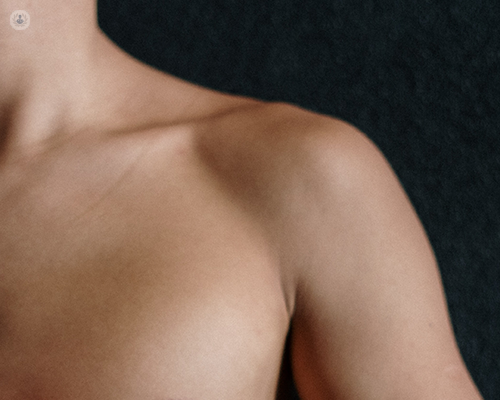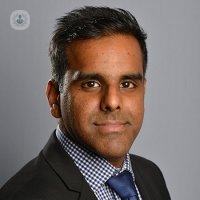What to expect from your implantable cardioverter defibrillator (ICD) procedure
Written in association with:An implantable cardioverter defibrillator (ICD) is a life-saving device that you may be given if you’re at risk of cardiac arrest or if you have already experienced one. Learn from Dr Afzal Sohaib, a highly respected consultant cardiologist with a specialist interest in ICDs, about the benefits of ICDs and what to expect from the procedure and recovery.

What is the benefit of a cardioverter defibrillator (ICD) procedure?
An implantable cardioverter defibrillator (ICD) is implanted to protect you from dangerous, life-threatening heart rhythms - these can lead to what we call “cardiac arrest”. The ICD detects these abnormal heart rhythms quickly and delivers a shock to the heart. If an ICD has given you a shock, it usually means it has saved your life!
ICDs are put into two groups of people:
- The first group consists of people who have an underlying condition which puts them at risk of a cardiac arrest. If you have had a previous heart attack and needed stents, or if you have a condition you were born with, such as a “cardiomyopathy”, you might be in this group.
- The second group are people who have survived a cardiac arrest and need an ICD to protect them from a further one. You might have come across some famous people in the news who have had an ICD after cardiac arrest and openly talked about their ICD, such as the footballer Fabrice Muamba or the former England football manager Glenn Hoddle.
How will I be asked to prepare for the procedure?
Usually, you will be asked not to eat or drink anything for around six hours, but this may vary slightly depending on where the procedure is or who is doing it. However, you can normally have water or clear fluids.
Good hygiene is essential to reduce your risks of developing an infection later. If you take blood-thinning tablets (e.g. aspirin, clopidogrel, warfarin, rivaroxaban, edoxaban, dabigatran, or apixaban), you might be asked to miss some doses but that will be individual to your circumstances - you should check this with your specialist. You can take most of your other medications on the day of the procedure.
If you are told you will be going home on the same day of your procedure, you will need to have somebody who can stay with you overnight in case you need some help.
Is there anaesthetic involved?
The procedure is usually performed under local anaesthetic so that you are not fully asleep under general anaesthetic. Your doctor may give you some sedatives which make you feel relaxed and drowsy. There are some cases where the ICD procedure is done under general anaesthetic if you have other medical problems. Certain types of ICD (such as the newer subcutaneous ICDs) are performed under general anaesthetic and your doctor will usually advise you if this is required.
How many people are in the room?
When you go in for the procedure, there might be quite a few people in the room. There will be the doctor (possibly two doctors) implanting the device, one to two nurses and a physiologist (who helps monitor you and helps to programme the device). As X-rays are used to guide where to put the wires, there will also be a radiographer taking X-rays.
What happens during the procedure?
Before the procedure starts, you will be connected to monitors to look at the heart rhythm. The area where the device will go in will be cleaned with special skin preparation cleaning fluid. After that has dried, you will be covered up with a drape. This may cover your face for parts of the procedure but the team will make sure you have sufficient space.
A small 3-4cm incision is usually made under your left collar bone. This is used to make a little pocket for the battery and wires are then passed down to the heart. These wires detect what your heart rhythm is doing and can deliver a shock. The incision is then sewn up with stitches.
The stitches are usually dissolvable, but some doctors will put one under the skin which needs to be removed 7-10 days later either at your GP or the place you had the procedure.
What is recovery like (short-term and long-term)?
The recovery usually takes a week. Your left shoulder might be sore and this should settle with some paracetamol. For the first four to six weeks, while the area is healing up, I would advise not raising your arm above your shoulder, nor doing any heavy lifting.
You cannot drive for four weeks after having your ICD implanted as a minimum. If you have had a previous cardiac arrest or the device gives you a shock, this period will need to be longer - usually six months. You need to inform the DVLA (Driver and Vehicle Licensing Agency) if you have an ICD.
The battery on the ICD is changed every 8-10 years but this is usually a much shorter procedure.
To receive Dr Sohaib’s first-class personalised patient care, visit his Top Doctors profile and arrange your online or face-to-face consultation.


